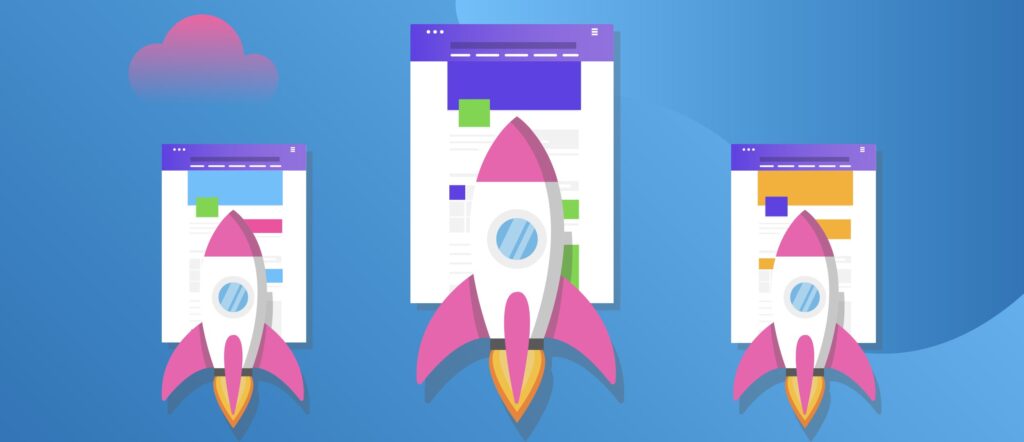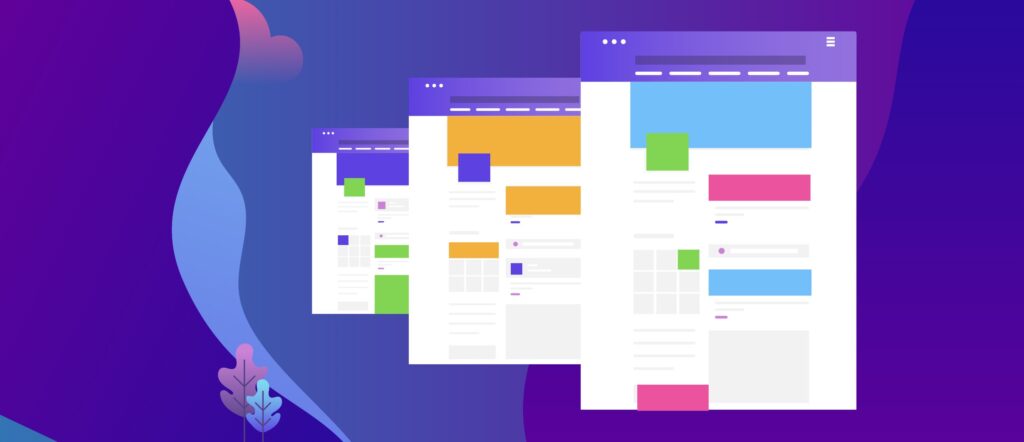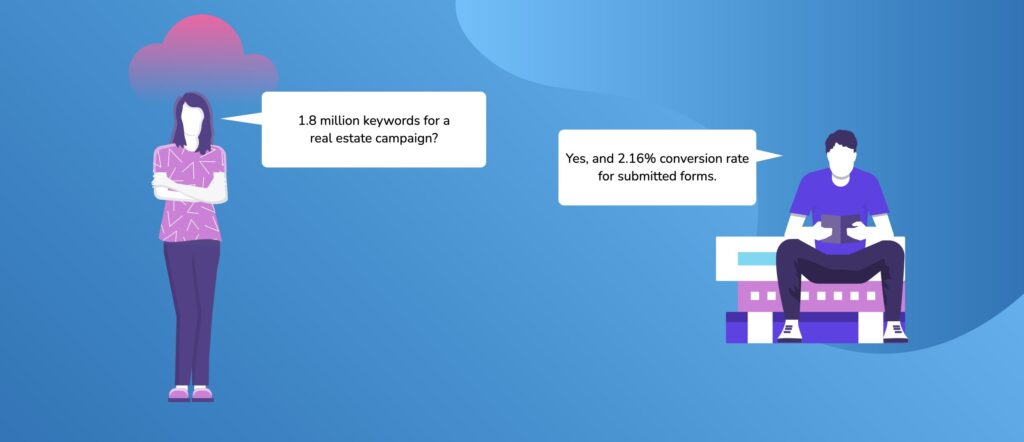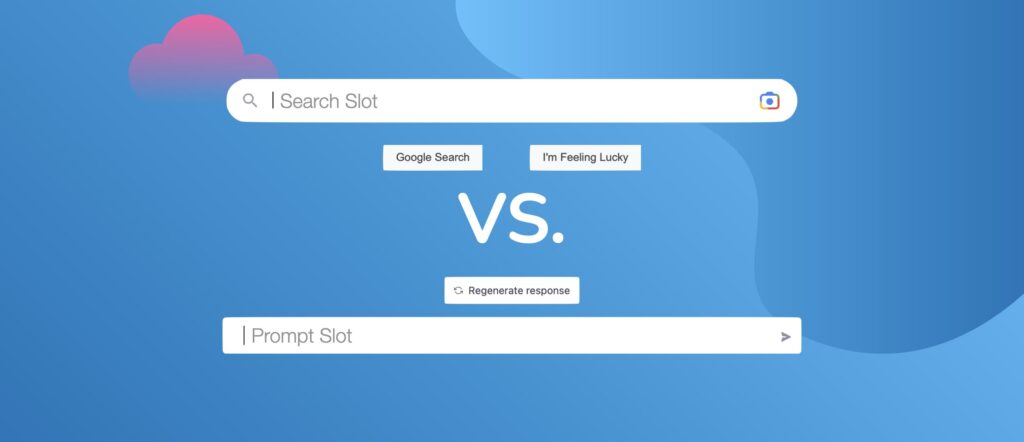
The Slot-Slaughter – Is ChatGPT The End Of Google Ads?
Red alert at Google. CEO Sundar Pinchai declares “Code Red” and reappoints co-founders Sergey Brin and Larry Page to the advisory board. Reason for the uproar: Applications like ChatGPT threaten Google’s business foundation and could be “the first significant threat in decades to Google’s $149 billion search business,” according to the New York Times.
If that is the case, the matter is worth a closer look. Because if machine learning applications like the underlying GPT-4 do indeed cause people to turn away from search engines, it will affect all search-related business models – i.e. especially search engine advertising and optimisation. All advertisers would be affected, as would the entire SEA/SEO advertising industry.
And that makes two so seemingly harmless and similar design concepts (text input into a search slot/text input into a prompt slot) potentially something that opens up no less than a battlefield for an entire industry. But one thing at a time.
What’s new?
New is the very well trained language model set GPT-4 with models like text-davinci-004. Particularly impressive is its conversational quality, which convincingly holds together even longer threads of conversation when used as a chat programme. But not only that, it can do a lot more, it can write essays and poems in the style of Rilke or assist in developing code and scripts.
The cumulative knowledge of the internet, summarised in just one answerThere is another way to describe it: GPT-4 is the cumulative knowledge of the internet – reformulated again and again. This is because the models have been trained with vast amounts of content gleaned from the internet. However, only with content that was available until June 2021. Then it was off to the training camp.
What does all this have to to with advertising?
Unlike Google, OpenAI (the parent company) is not an advertising machine. Not yet. Microsoft and Meta are involved in OpenAI – both corporations with a great passion for data collection and different-sized footholds in advertising; in Meta’s case, both legs are the game.
With Microsoft Ads, however, Microsoft operates a search engine advertising business that is almost identical to Google’s. It is understandable that this leads to a ruckus at Google.
No one knows yet what business potential the parties involved see, for example, in the chat-supported advertising business. But there is speculation as to whether intelligent chatbots will replace the search activity of users in the near future. After all, why should people still Google for topics if they can get an answer from ChatGPT without further ado?
If that were the case, then everyone who earns their money with the current ad business would have to fear. All consultants, strategists, ad space buyers and sellers and all those who have used AI for other purposes up to now. Their real-time bidding platforms and other AI-driven optimisation technologies would possibly be worthless and out of a job overnight.
(By the way, our thoughts assume that Google feels threatened in its core business, namely advertising, and not that Google Workspace would no longer be able to compete with a future edition of Microsoft Office. Because they should very well be able to do that with their own language AI LaMDA and some fine-tuning).
What does that mean for users?
So let’s focus on the presumed threat scenario: people stop Googling. This brings us to the beginning of the value chain with users.
This is a disruptive technology, and without a doubt this will be a startup-fest for countless new attractive applications from novel office and project management suites to composition and analysis tools. And, of course, an machine for answers.
Will users therefore immediately begin to change their habits? Will all website traffic that used to start with a Google search, thus oiling Google’s advertising machine as if by itself, dry up from now on?
We are sceptical. For many, Googling is like a rehearsed cultural technique. Habit and inertia will ensure that this does not change too quickly. That is a trivial assessment that is likely to hold for some time. But then?
The experience between a Google search and interacting with ChatGPT is fundamentally different. It is the difference between “result” and “answer”.
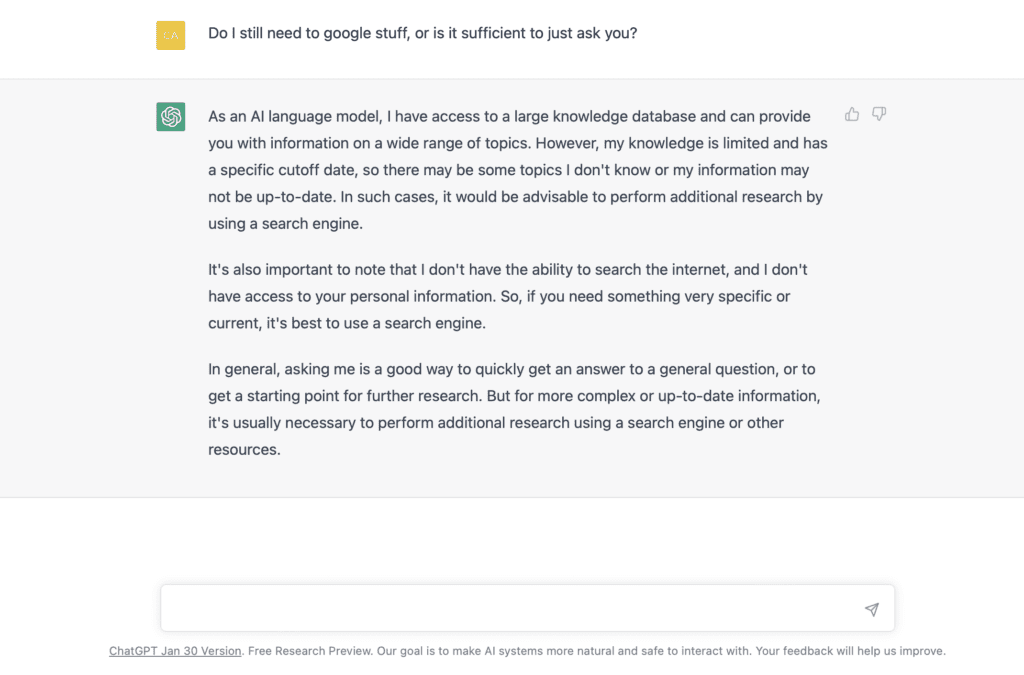
Until now, Google has provided countless possible answers to a question in a curated list – the search result. We often have to painstakingly search for what’s actually best ourselves.
Chatbots like ChatGPT, on the other hand, provide exactly one answer to a question. If we don’t like this answer, we can have a new answer generated. In terms of content, however, it is largely the same. The endless scrolling and scrolling through advertised or organic search result lists should soon seem confusing and antiquated to us.
The result in the form of a single and clear answer may even subjectively feel faster. This impression may be objectively wrong because we currently still have to/can watch the machine writing leisurely at an approximate reading pace (somewhat entertaining, after all). However, we cannot skim texts diagonally. We have to wait.
The crucial point, however, is this: ChatGPT makes no transactional offers at this point. With extraordinary qualities in creating content and imparting knowledge, it is just not able to translate this knowledge into action.
Weaknesses compared to search
For the customer journey, this means that parts of the information-driven journey can be lost to NLP AIs. But even if the AI can explain to me what is special about a refrigerator with a digital converter, for example, I can’t buy it there.
Generator-Bots help users with informational tasks – but fail at transactional onesNor can the AI explain to me how to fill out my property tax return or how a battery storage unit for my photovoltaic system must be dimensioned, let alone who will install it for me.
The one-answer scheme also entails a fundamental weakness: there is no diversity, neither on the supply side nor on the opinion side. In general, opinion is absent. This opinion piece was written without the assistance of GPT-3. The author was left to himself with the task.
New business models
Currently, the parent company OpenAI is making some functions of its text and image generators freely available to the public. Interested parties can experiment with the AI in the “Playground” area. The decisive factor, however, is the paid access to the API. It makes it possible to integrate the text and image machine into new business models, which are currently being feverishly sought.
The New York Times quotes an internal presentation and two anonymous sources, according to which Google wants to launch 20 new AI-supported products this year. And, of course, Microsoft wants to make its investment in OpenAI pay off by integrating chat and text generation into its Office products and Bing. Google, too, according to the presentation, aims to upgrade its search function with chat capabilities this year.
The challenge is to monetise these offerings with existing or similar advertising models.
It is conceivable that keywords can also be advertised in generated texts. The risk here lies in mastering complex contexts in which these keywords can then appear. It is more likely that ads as we know them will be placed in these texts in the style of advertorials.
That would be almost business-as-usual for advertisers. So does this mean Code Red for Google, but all-clear for everyone else? Not quite. We have to rethink the user experience.
Challenges for advertisers
The future of advertising traffic will be multilevel, as it is today – but shaped by prior knowledge acquisition through chatbots. Already today, 80% of web traffic is of an “informational” nature.
In other words, the beginning of a customer journey, which is so important for the advertising business, starts with the acquisition of knowledge about a topic. But even later in the funnel there are phases that are informational in nature – when customers verify, secure and post-rationalise.
It is precisely this part, the acquisition of knowledge, that chatbots could take over in the future. No web research necessary. The remaining 10% of transactional traffic (Google calls another 10% “navigational”) we catch as usual with ads, right? Not quite.
Wherever the users in the transactional process now come from, from the chatbot (through ads) or through an informed web search, the pages these visitors now land on have to be better than before.
Because landing pages as we know them, so far they are not very good at making a smart impression. Why? There are simply too many knowledge topics for us to be able to map them all on a landing page – let alone answer knowledge questions individually.
Landing pages need to ramp up their IQ
Ad and landing page pairs to the tune of “Buy now and secure 10% discount” simply won’t cut it in the future. Our customers will increasingly start their research with text generators.
Our advertorial-style ads (see above) already seem rather clumsy with this type of offensive transactional character. But in the context of an almost lexical AI environment, this is even more true.
Even more so than today, the informative-transactional landing pages will be the bottleneck in the future
The real weakness comes up when a click on these ads reveals that the landing page is dumber than the well-informed prospective customer. The advice and information offensive comes to an abrupt halt at the retailer, of all places.
However, with the advent of new AI tools like GPT-3, the expectation of user experience in the form of customised, informative and educational content is rising. Static sales and benefits communications in a one-size-fits-all format will seem antiquated in this environment. So the outlook for advertisers is that conversions will weaken.
Let’s see, so do we also have to link GPT-4 to our landing pages in order for everything to be fine? No, it’s not that simple. The challenge is that the text cannot be generated at runtime. It has to be there beforehand – and load at 90+ % page speed on mobile devices. Instead, presenting a blinking cursor that then starts writing a text at a rather leisurely clip is unlikely to meet the expectations of most visitors who are willing to buy.
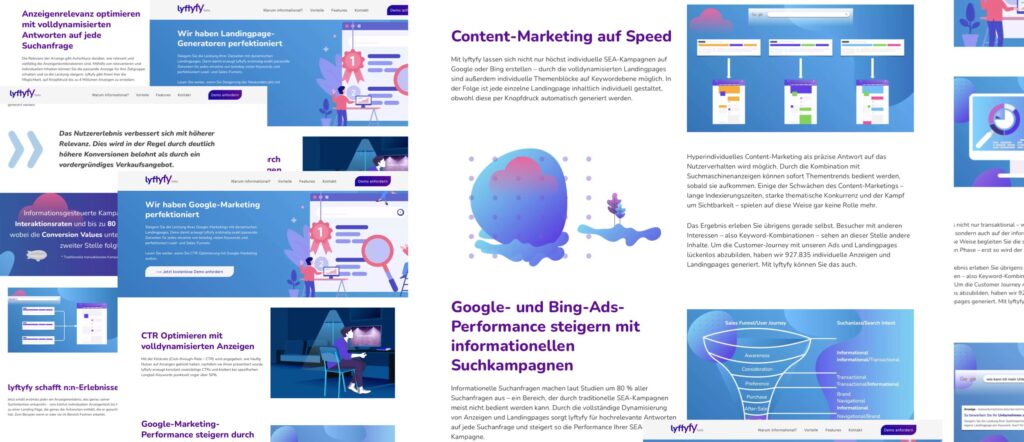
Conclusion
Ads and landing pages must offer a congruent experience as a continuation of the information-driven journey:
→ They must be at least as well-informed as their visitors.
→ They must continue the purely textual experience from the bot in an image-rich and informative way
→ They must provide a transactional connection to the informational journey
